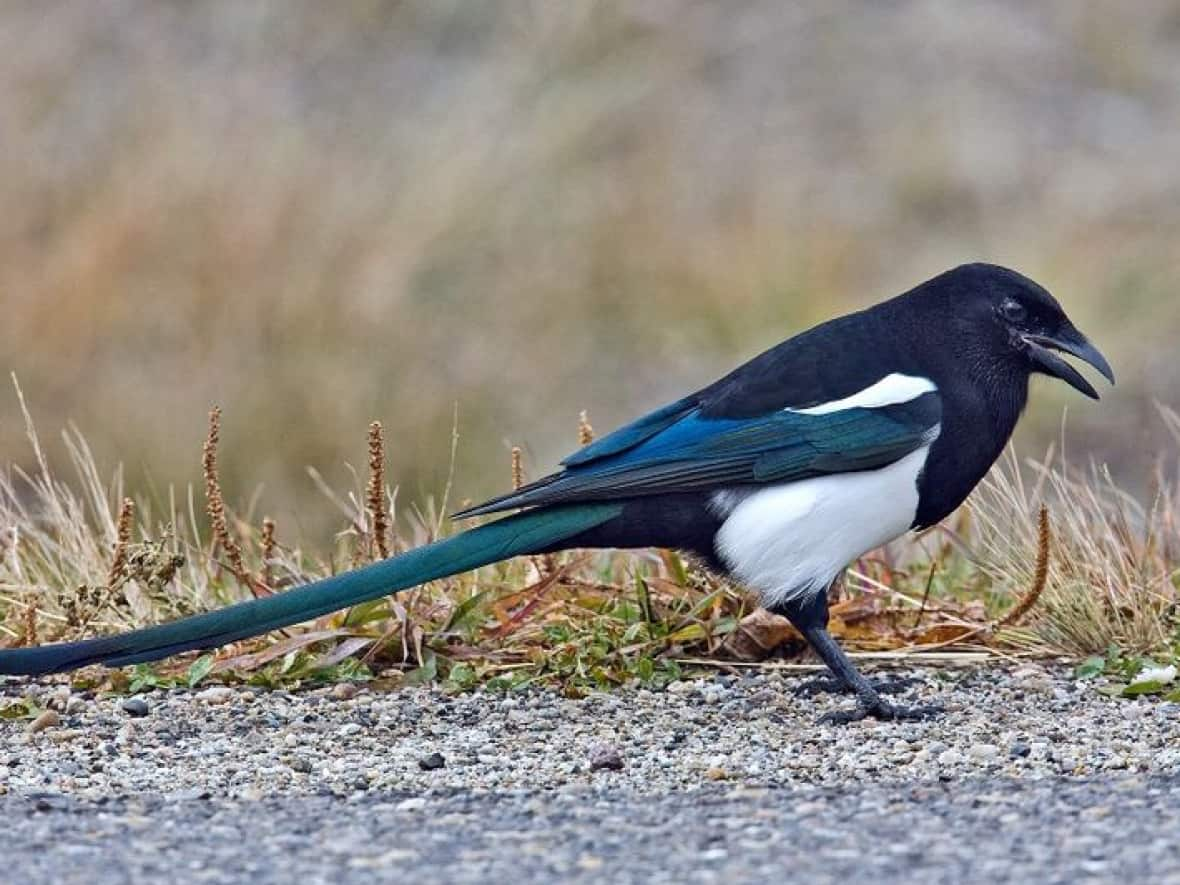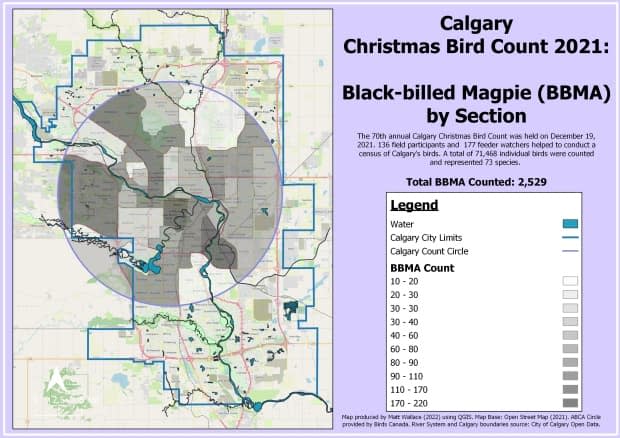Calgary bird count maps reveal where magpies and geese flock to

For decades, Calgary bird counts have given people a glimpse of what winged species call the city home. Now, heat maps are giving people a better idea of where various bird species flock to.
With his passion for data and geography, freelance urban ecologist Matt Wallace has crunched spreadsheets worth of bird count data into several heat maps, each revealing where certain species were spotted most, or least, in the city.
"For anyone who wants to get into birding, these are excellent places for you to check out and explore," said Wallace.
Magpies, for example, were seen more in the Beltline than Bowness.
"These birds are profiteers," Wallace said. "They look for abundant food resources, safe habitat, which can often be found in urban environments where predators are less likely to be around."
The Canada goose enjoys spending time in open water — you'll find them in the city's southeast.
Wallace said Calgary's Canada goose population eclipses Edmonton's.
"They have access to warm water and they can also fly out to fields where there's lots of grain and food for them," Wallace said. "So it's a short commute with a lot of resources."

The recent Christmas Bird Count was conducted on Dec. 19, 2021, and provides a point-in-time look at Calgary's bird population. Overall, volunteers counted 72 species and recorded more than 75,917 individual birds.
Typically, that data is released only in table form, but Wallace said he couldn't help adding maps as a new feature.
"This is kind of 'hot off the press' bird data for Calgary," Wallace said.

Discovering what neighbourhoods birds prefer in Calgary is a fun development, said Nature Calgary's Kaya Konopnicki. It brings the bird data to life, she said, and allows people to fill in narratives about their feathered friends.
"Magpies are super controversial and it's unfortunate because they're really smart and interesting birds," Konopnicki said. "They're the kind of bird that can eat trash or eat seeds or eat carrion or hunt."
Magpies are early risers and constant conversationalists, Konopnicki adds, so people can find them annoying. But Magpies create habitat for other types of birds, and they hunt and gobble up insects.
The more magpies in your neighbourhood, Konopnicki said, the more likely they are to usher in other birds. Cooper's hawks and even great horned owls use collapsed magpie nests as their own.
"Learn to love the magpie," Konopnicki advised.

 Yahoo Movies
Yahoo Movies 
